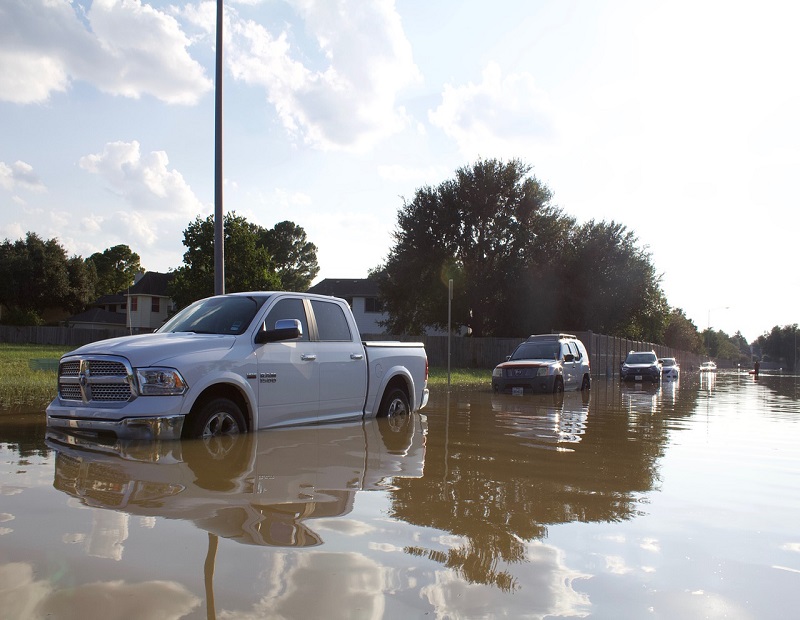The Climate Factor in CRE Investment Strategy
As losses mount and premiums rise, risks posed by extreme weather are drawing heightened scrutiny from industry stakeholders.

Image by Gerd Altmann via Pixabay.com
Commercial real estate investors are starting to evaluate how extreme weather is affecting the value of their portfolios, acquisitions and developments. Some investors have already indicated that they are avoiding exposure in locations that present high risks to property operations or asset appreciation.
These findings and more are detailed in Climate Risk and Real Estate, the second report on climate issues and investment decisions released by the Urban Land Institute and Heitman. Since the organizations published the initial edition in early 2019, the number of investors and developers pursuing methods to assess climate risk has grown significantly, said Billy Grayson, executive director at ULI’s Center for Sustainability and Economic Performance.
“When we embarked upon the latest report this summer, we found that the majority of REITs and other real estate investors had done some level of a climate-related assessment of the physical risks in their portfolios,” he said. “It was a pretty dramatic change from the first report.”
Investors are focused on assessing the impact of physical “shocks”—hurricanes, rising sea levels, extreme rain and inland flooding, tidal and coastal flooding, and wildfires—as well as “stressors” like extreme heat and drought and wildfire smoke. Investors are also beginning to measure a market’s resiliency and the ability of local governments to respond to catastrophes. The assessment of this so-called “market risk” includes examining a city’s financial health, infrastructure, and how insurers, credit rating agencies, key employers and others view the market, Grayson explained.
Rising insurance costs
The emphasis on reviewing weather and natural disaster risk follows a rash of storms and wildfires over the past few years that fueled huge losses among insurance companies. After a decade of relative calm along the East Coast and Gulf Coast, hurricanes Harvey, Irma and Maria in 2017 caused insurance losses of $92 billion, according to global reinsurer Swiss Re Group. That accounted for the bulk of a record $144 billion in total insured losses that year.

Flooding caused in 2017 by Hurricane Harvey (above) and two other storms contributed to $92 million in insurance losses. Photo by andrewtheshrew via Pixabay.com
Consequently, annual premiums are increasing 10 percent to 15 percent for commercial properties that haven’t had a recent insurance loss, said Chip Stuart, executive vice president & chief sales officer at Hub International. Properties that have recorded a previous loss are facing increases of anywhere from 25 percent to 50 percent, he added. At the same time, coverage limits are generally decreasing while deductibles are rising.
“The habitational side of real estate became very unprofitable for insurance companies,” said Stuart. “It has created what we consider to be a ‘hard market’ where we’re having a hard time finding carriers for property owners who have had claims or who have coastal properties.”
While hurricanes along the coasts are blamed for recent premium escalations, no part of the U.S. is safe from natural disasters or losses, noted Alexandra Glickman, senior managing director & global leader of the real estate and hospitality practice at insurance brokerage Gallagher. A massive thunderstorm with sustained high winds caused damages of $7.5 billion in August from Nebraska to Illinois, a small swath of the country that’s prone to tornados and hail, she said. And while extreme weather events are less common in her home state of California, wildfires and earthquakes pose plentiful hazards.
“Insurance companies have become much more sophisticated in modeling climate risks,” said Glickman. “And they’re focusing much more on the secondary characteristics of an asset—its age, the construction type, the age of the roof, the asset class, the engineering. Real estate investors need to recognize that insurance costs will vary depending upon the location and those characteristics.”
Climate havens?
The climate risk report noted that investors are still looking for appropriate metrics to model physical and market risks. It also highlighted Heitman’s efforts to screen and score those risks, and a company official in the report acknowledged that the firm could walk away from investments that fell out of its climate risk profile.

Reduced exposure risks may be a reason for investors to consider such emerging 18-hour markets as Austin (pictured), Dallas, Denver and Nashville. Image by KBaucherel via Pixabay.com
Byron Carlock, U.S. real estate practice leader for PwC and a chair of the recently released Emerging Trends in Real Estate 2021, the latest annual forecast issued by ULI and PwC, said that he has not yet heard of any investors redlining markets to avoid climate risk. But, he added, there are discussions to reduce exposure to climate threats in coastal cities by investing in growing 18-hour markets such as Nashville, Denver, Dallas and Austin.
Meanwhile, officials in interior cities such as Duluth, Minn., Buffalo, N.Y., and Cincinnati are beginning to promote themselves as climate change refuges.
“There are markets that look like they could be the best places to be in 100 years if the climate change trend continues—they have moderate-to-cold temperatures right now, and some are near an abundance of water,” Grayson said. “But our research suggests incremental steps are more likely. If Southeast Florida starts to face more challenges, people will move to Orlando; if New Orleans is challenged, people will move to Atlanta.”







You must be logged in to post a comment.